How to cut glass and other materials with a glass cutter?
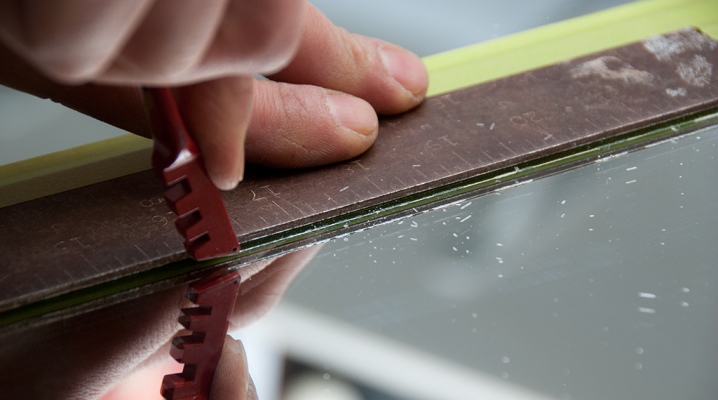
It is much more difficult to do without a glass cutter when cutting glass than to use one. There are several methods that allow you to cut glass without a glass cutter, many of them are simple, but take time from the master, whose work is put on stream.
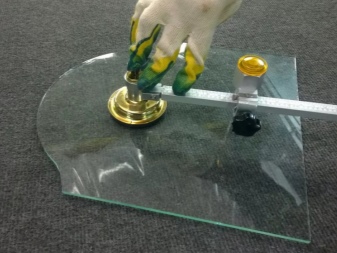

Preparation
To cut glass with a glass cutter quickly and efficiently, the glass sheet is pre-cleaned. A new sheet of glass only needs to be wiped clean. A crumpled piece of newspaper will give the best results - newsprint leaves no lint, even though it is a dusty environment in and of itself. Glass rubbed with newspaper will remain dry. A high-quality washing result is achieved using non-abrasive detergents that remove most everyday stains and smudges, but maintain a glossy, perfectly flat surface.
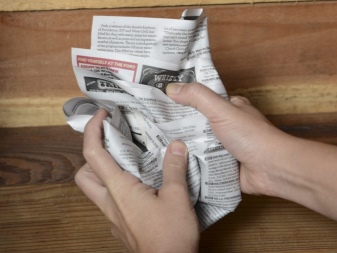

Glass previously installed in a window, which was thrown away with the frame, requires careful removal of traces of paint, grease, etc.
Grease can be easily removed with kerosene, dried paint can be cleaned off with a razor blade, a utility knife, or removed with solvent 646. It will cope even with dried paint. Traces of polyurethane foam can be removed using any fuel and lubricant. After cleaning and washing, wait until the glass is completely dry.
The second stage is glass marking. Particularly difficult to cut and separate are the curved line segments used in decorative insulating glass for special applications. These cases also require careful calculation. You may need two different glass cutters that differ from each other in the shape and execution of the workpiece. A competent and individual approach will reduce the amount of waste or even do without it.

A table with a chipboard or natural wood top is used as a workplace., covered in the place where the glass sheet itself lies, with a dense and thick matter. It will not let the glass squeeze dust and debris that can be easily overlooked when cleaning the table. And it will also hide its not perfectly flat surface, to which the glass sheet does not adjoin everywhere.


Features of working with different types of glass
Before cutting the glass with a glass cutter, make sure that the glass in front of you is exactly the type you are working with. It does not matter whether it is old or new - there should be no traces of foreign substances and particles on its surface that interfere with cutting it neatly and evenly. Tempered glass cannot be cut at home. Tempered, it is no longer subject to processing: it is easy to break, since such a glass sheet has lost the properties inherent in ordinary window glass.
Its unsuitability for cutting is associated with a bending impact force that is 7 times higher than that of simple glass. Being resistant to breaking, it resists any mechanical stress, including cutting.
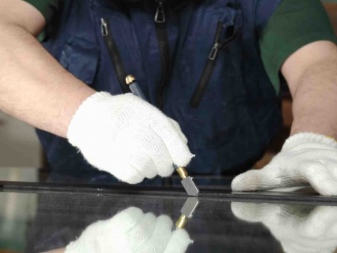
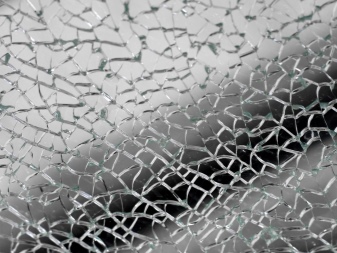
Even a diamond glass cutter will not help: the hand of the master involuntarily changes the force when pressed.
The slightest pinching will immediately lead to a crack, diverging in all directions. Cutting of tempered glass is carried out only on especially precise machines that do not allow lateral and tangential overload, which easily turns the hardened sheet into a small crumb, consisting of cubic blunt fragments.Tempered glass sheets and products are processed before annealing, which deprives the glass of the ability to cut into pieces without cracking in all directions.

Corrugated (corrugated, wavy, patterned) glass is cut from the smooth side. Trying to cut the leaf from the decorative, "curly" side, the master will not achieve the continuity of the furrow along which this leaf breaks. An intermittent groove, at best, will make the cracking line uneven, at worst, a section of the glass sheet will simply break. It is better to entrust its cutting to a roller glass cutter, which has a perfectly smooth blade rotating around its axis.



Plexiglas obtained from acrylic is not critical to breaking, but its surface is easily covered with small "line" scratches. It can quickly lose transparency and become opaque.
It is possible to scratch the furrow even with a regular steel nail. A red-hot, sharp knife also helps to cut the web quickly without spending much effort.

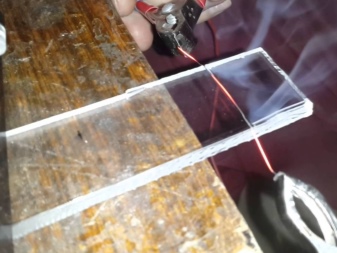
Acrylic glass is easy to saw and cut, even standing on an edge and having a thickness of no more than 2 mm, it is not necessary to heat the knife in this case. Thicker transparent acrylic can be easily cut with a grinder or saw. A sharpener or file will allow you to quickly and efficiently align the edge along the required cutting line.


Large sheets, exceeding several square meters, are cut at the glassworks using devices that supply high-pressure fluid. Plexiglass is easy to cut with the help of a constantly heated thin wire pulled into a string - it quickly and evenly enters it, like a fishing line in butter at a temperature of 5-10 degrees Celsius.

Precautionary measures
When cutting glass without using protective gloves and goggles, a worker can cut his hands and clog his eyes with glass dust and small fragments. It is forbidden to try to cut the glass sheet by placing it on your lap or questionable support structure. Glass cannot be carried over the edge with bare hands - sharp as a scalpel, the edges cut the skin in a split second. Lifting the sheet, it is taken not by one edge, but by two. It is easy to break a large sheet with careless transfer.


Shoes and trousers should be closed type - in case of an accidental fall, unprotected skin is easily cut. There are cases when a worker, with careless movements, cuts veins with sharp edges on his arms or legs and leaves further work for a long time. A protective suit or overalls should be made of dense fabric - it will protect the human body from injury. After work, shoes and clothes should be sent for cleaning - this will prevent the spread of glass particles around the house or the site of the facility, their accidental ingestion.

Cutting technology
Despite the seeming uncommonness, glass cutting is not difficult for a person who, having worked for an hour or more, has mastered and possesses the necessary skill. Cutting glass sheets is not a job where haste and efficiency go hand in hand. For the process to be successful, speed and strength must be matched with each other. A beginner, who for the first time in his life took a glass cutter in his hand, practices on fragments or pieces that are waste from the main cutting and are of no value.
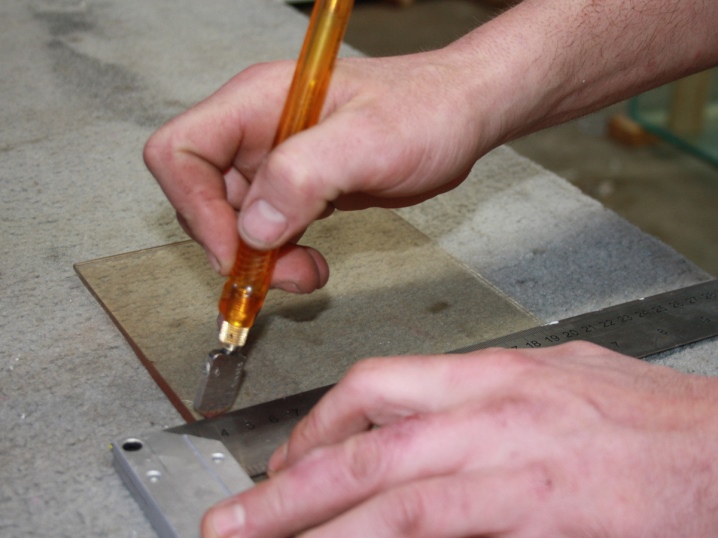
The more uniform the cutting line drawn with a glass cutter, the more evenly the sheet will break when trying to chop it along this line.
The guide line along which the cutting is performed is applied with a felt-tip pen or using a glass-recorder. In the vast majority of cases, if this is not a decorative window with an original frame, the curvature of which is arbitrary, the line is drawn along a ruler. Before starting work, make sure that the glass cutter is in good working order.
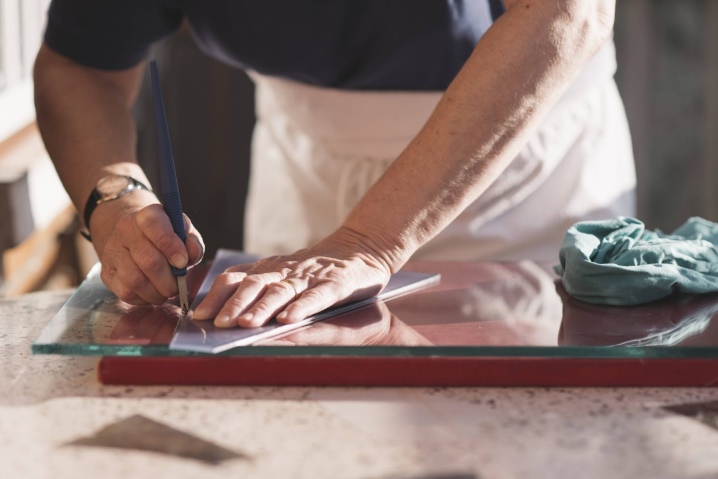
Ordinary
A roller, diamond or glass cutter with oil supply is used to draw a furrow along which a chip is cut. From the beginning to the end of the marked line, the furrow is drawn with uniform speed and force. The cutting part must not be blunt. Effort is slightly above average. The furrow should be translucent, without interruption and not too deep.
Excessive force can quickly disable the cutter. One of the correct results is a slight crackle. It is recommended, when a furrow is broken, to retreat half a centimeter from the previous mark and perform a new tracing. It is optimal to start with a little effort and quickly build up the desired level of impact of the glass cutter on the glass sheet. The beginner will quickly learn this and will soon begin to cut sheet by sheet.
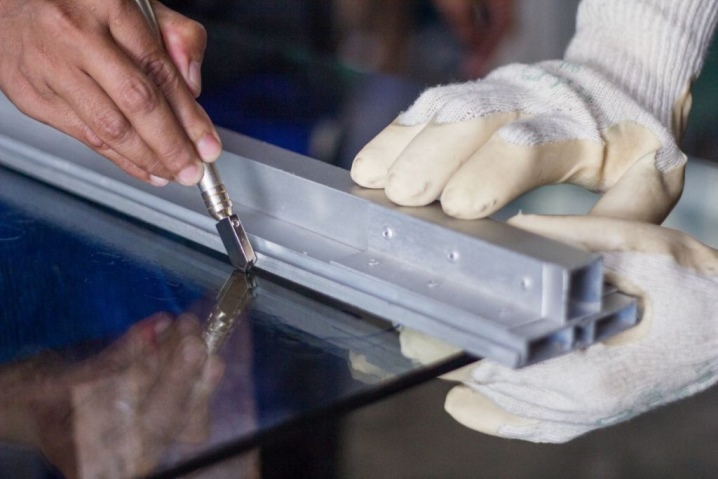
The drawn sheet is laid and held so that the furrow recedes somewhat from the edge of the table. The fact that the drawing of the furrow was done correctly is indicated by the even chipping of the glass.
Gradually increasing the intensity (force) of tapping with a glass cutter or a hammer at the place where the furrow is drawn, they achieve the appearance of an even crack, which splits the glass in the right direction. When the crack reaches the opposite edge, the piece of glass will separate itself. It is not recommended to chip the glass with small fragments - this will complicate the separation of the necessary and unnecessary parts of the glass sheet.

If tapping with a glass cutter does not work, put a match or a toothpick along the line. The worker presses against the glass on either side of the drawn furrow. When the glass does not crack along the cut line, it is aligned with the edge of the table. A hand in a protective glove exerts a breaking force on the glass sheet. If the third attempt fails, the sheet must be re-cut with the glass cutter. It may be worth changing the cutter or replacing the blunt roller with a new one.

If you don't have a glass cutter, you can use a concrete drill instead. If a roller or oil glass cutter did not fit, then you should resort to a diamond one. The new furrow is cut with a fully serviceable and working, and not worn-out glass cutter. If too narrow a strip is broken off, the excess sheet to be removed is chipped off with pliers or side cutters. Sharp edges are dulled to prevent injury with sandpaper or a fine-grain sharpening bar.


Curly
A curly line is a zigzag, wave, broken line, or curve in any form. This is how, for example, colored glass is cut, which serves as a decoration. Figured cutting of glass is used for laying glass mosaics, for example, on not hardened, just laid cement plaster. The cutting process is not much more difficult than conventional cutting.

Figured cutting is performed according to a pre-prepared template. An oval, smooth line is made from a chipboard or plywood pattern. The pattern is fixed on the glass sheet by means of double-sided tape - it will not allow it to move over the glass during cutting. The cutter is separated from the exact cutting line by an average of 2.5 mm. After drawing a furrow of a given curvature, using a glass cutter or a hammer, the glass sheet is chipped off. Separating a piece inside the sheet may require additional cutting with a glass cutter from the outer edges of the sheet to the inner cut line.


How to cut other materials?
A glass cutter is not needed for acrylic glass. It is an organic material that can be cut and chipped with other cutting tools, down to a simple knife. Thickened, more than 2 mm, acrylic sheet is drawn several times in the same place. A neat break along the line is made by weakening, thinning the material at the point through which the cutting line passes.
Tiles or thin tiles are cut with a glass cutter in the same way as ordinary glass. The tiles are made from baked clay. Thin, up to 3 mm, sheets and squares of tiles can be cut with an ordinary glass cutter no worse than a simple window glass.

Porcelain stoneware is much thicker than plain tiles.For its cutting, a universal tool is used - a glass cutter.
This is a reinforced and enlarged (in size) version of a conventional glass cutter, which has a roller (wheel) that is larger than that of a simple tool and thickened along the axis of rotation. In some cases, the number of rollers reaches five - the more there are, the longer the running footage of the cut materials.
Floor tiles are cut without unnecessary chipping using roller glass cutters or diamonds. Like any product made of fired clay, ceramic tiles can be easily cut using glass and tile cutters, a grinder or a saw machine. Any glass cutter is suitable for cutting a bottle, except for a circular cutter, as well as folk methods based on sharp heating and cooling of glass. In the latter case, the glass will burst itself from the temperature drop, if it is not tempered, but the cut line will not be completely flat.

Useful Tips
The secret of a successful cut is as follows.
- If the running life of a roller or oil glass cutter is insufficient, purchase a diamond one. Its peculiarity is that the master learns to work with him longer. To adapt to a specific product, the length of the test furrow often reaches 200 m. The sharpening angle and the direction of the edges determine how quickly the worker will work with the diamond most efficiently.
- If you've got a diamond cutter, examine the tip of the cutting edge under a magnifying glass for nicks or chips. The diamond is recognized by the shape of the teeth - flat and straightened, plus a steep dihedral. A sloping and straight edge should be facing the master.
- The task of the master is to determine the slope at which the drawing of the cutting line will be extremely lightweight. The groove from a diamond is significantly thinner than from a roller, and the cutting process itself is characterized by a glass ringing rather than a crackle.
- A deviation of the diamond even by a degree is unacceptable - the groove will receive coarser, blurred edges on both sides. When chipping, irregularities in the edge are formed, which require additional smoothing. A diamond glass cutter is capable of cutting through more than one linear kilometer of glass - along the cutting line.

To cut the perfect round glass, you need a circular glass cutter. But finding it in local hardware stores is not always possible. An alternative is to use a regular glass cutter with a round wood pattern.
Not every master will learn to cut quality glass the first time. Practice will quickly develop a certain skill in the beginner. It is better to pass unsuccessful attempts on the glass remnants formed after cutting by another master.
How to cut glass correctly, see below.












The comment was sent successfully.